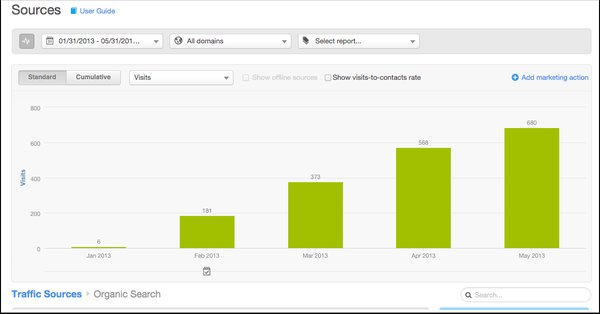
How to Prove Inbound Marketing ROI to Your Boss
July 27, 2015
By Rachel Moore

Is proving to your boss the ROI, or return on investment, of your inbound efforts important? Sure. Does your ability to show that ROI correlate to how big your budget will be next quarter, half, or year? Definitely. But is convincing your boss that there’s a direct correlation between your inbound efforts and your company’s success a piece of cake? It doesn’t always feel that way. Year after year, inbound marketers say their greatest challenge is proving the ROI of their inbound efforts (Source: 2014-2015 State of Inbound Marketing Report). But here’s the good news: it doesn’t have to be!
If you’ve been using marketing analytics software like HubSpot, Marketo, Tableau, or otherwise, you probably already have all or almost all the information that your boss wants at your fingertips. So what is that information? It’s the key metrics that correspond to your activities in each stage of the Inbound Methodology: attract, convert, close, and delight.
Here are key metrics you can use to prove to your boss the Inbound Marketing ROI:
Attract
Attracting more qualified visitors to your website, at root, is about making it easier for internet users to find you - instead of you spending hours combing through email lists and phone books. So, what better way to show your boss that Inbound Marketing is working than by showing off an increase in the number of visitors who find their way to your site via organic search. Choose to show a data set starting just before your inbound efforts got underway and ending at the end of last month (unless it’s the the end of the month already), so that you have a full month’s worth of data.
Here’s an example using HubSpot’s Sources tool:
Convert
It’s not enough to just get more site traffic - a complete view into the ROI of your inbound marketing must also reveal the impact of your efforts on the number and quality of leads you’ve converted, too. Here, you’ll want to show your boss two things:- Your inbound marketing efforts have increased the number of leads you’re converting on a monthly or quarterly basis across all the channels you’ve been active on (i.e. social, organic, referrals from other sites, etc.). In HubSpot, this data also lives in the Sources tool.
- The overall quality of those leads has increased. If you’re successfully attracting more of the right kinds of visitors to your site, this is just an added benefit - a greater percentage of your leads are a better fit for your product or service. By using something like lead scoring, whereby contacts get assigned different point values for accomplishing specific tasks or having certain qualities, you can keep an eye on the overall “score” of all your leads as a whole.
Close
At the end of the day, your boss (and their boss, and their boss’s boss) holds one number sacred above all others: revenue. Closed-loop reporting, or the ability to attribute each customer to a specific lead source or path through your content, is a great way to draw a direct connection between your inbound marketing activities, closed customers, and your company’s revenue. Reports of all customers closed by the referral page that led to a conversion, as well as Attribution Reports, should be your go-to for this data.Delight
Ah, delight. It’s not all about hugs and warm fuzzy feelings - it’s also about measurable results that will help you prove the ROI of your inbound marketing efforts. “Delighted” customers not only act as referrers for other, new customers - they tend to stick around and purchase more in the future. So how do you show your boss a connection between your inbound efforts and your company’s increased upsold and referred customer numbers? Keeping track of trends in what content your existing customers have accessed prior to and at the time of upsell can give you a window into the influence that content is having on their sales experience. You can also use social media monitoring tools tuned into your existing customers’ mentions of your product or service to see who they send your way!Measuring the ROI of your inbound marketing and proving to your boss that your efforts are paying off doesn’t have to be hard - all it takes is a marketing analytics tool. By knowing what data to look for and where to find it, you’re off to the races.

About the author
Rachel Moore was formerly a Senior Consultant and Team Leader at SmartBug Media. A HubSpot alumna, Rachel uses her 7+ years of experience as a marketer and neuroscientist to help clients develop innovative strategies to achieve and exceed their business goals. Read more articles by Rachel Moore.






